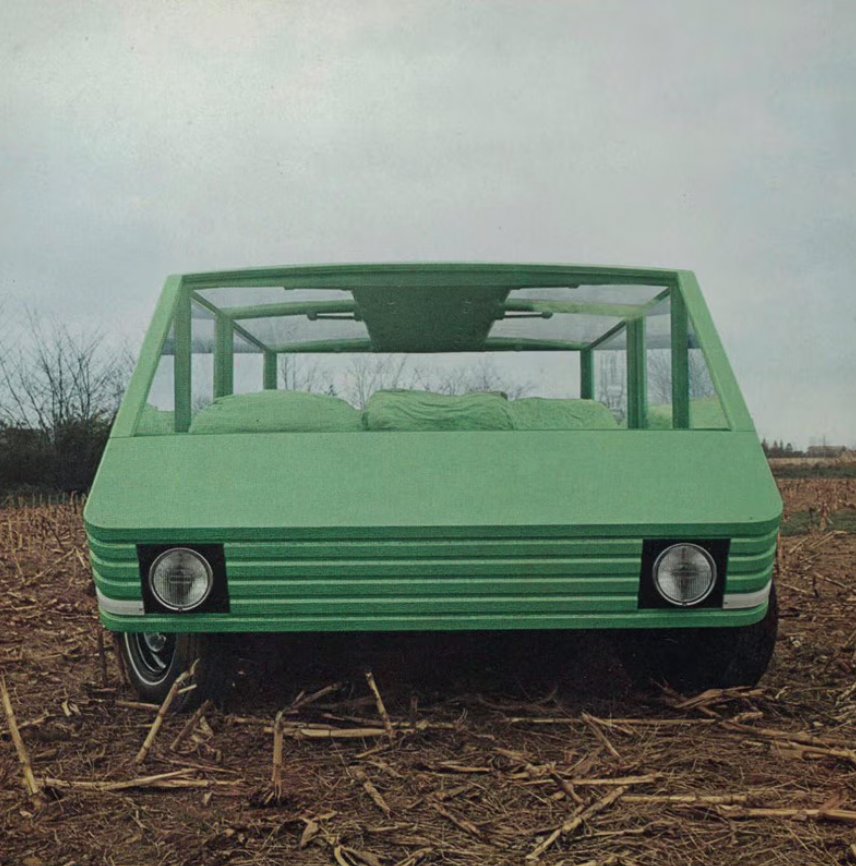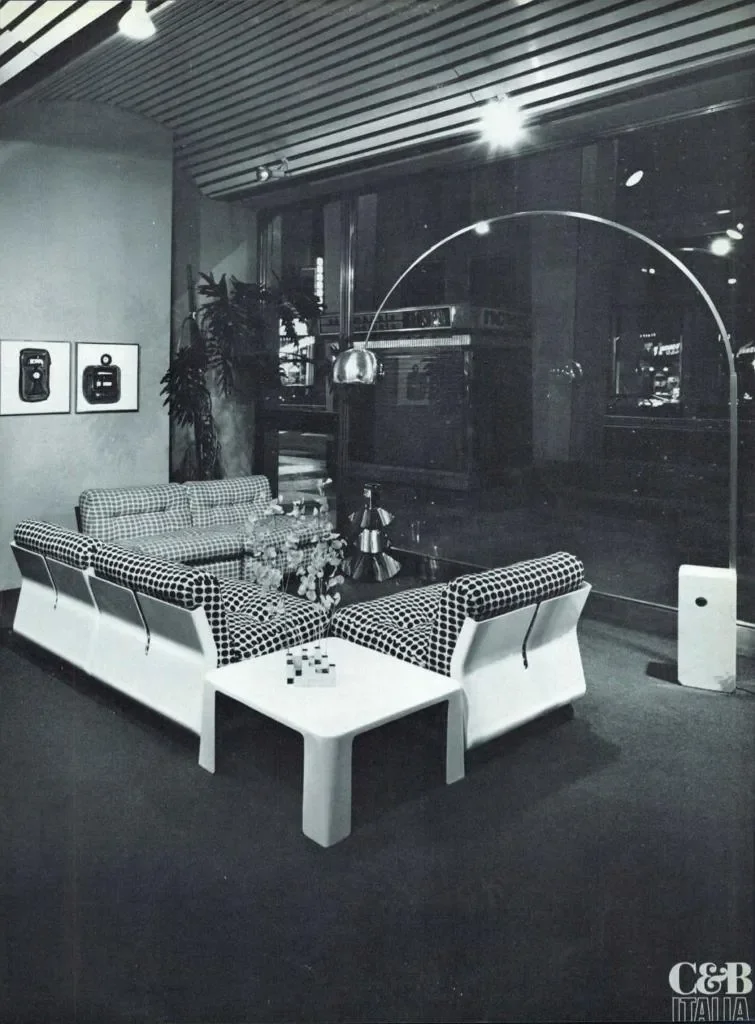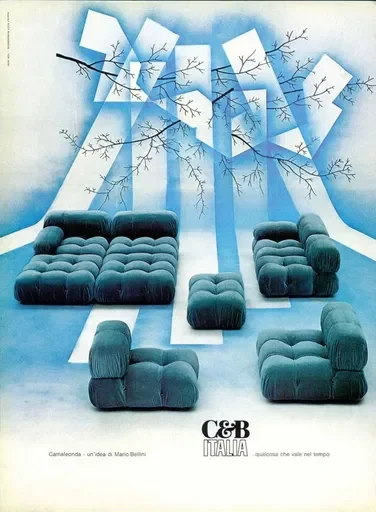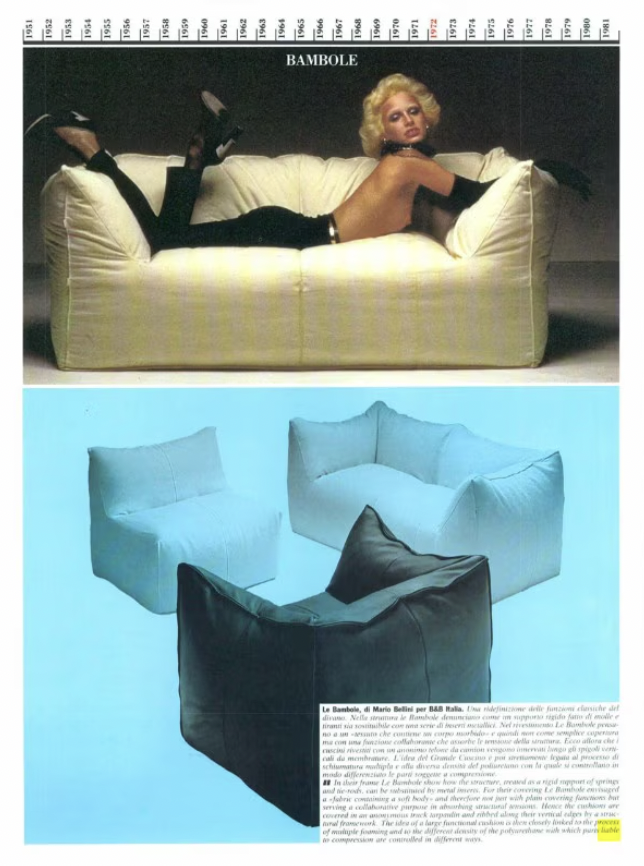MARIO BELLINI
1935 - 2021
Mario Bellini is one of Italy's most influential designers - with a career that traverses architecture, technology, furniture and industrial design. Bellini began his career in the post war period, wherein Italy saw rapid reconstruction and dramatic industrial growth - laying the perfect groundwork for radical design. Unmoored to traditional manufacturing processes, designers were free to experiment with new materials - notably plastic, polyurethane foam and thermo-moulding. Through their creativity Italian designers could now compete with established movements such as Bauhaus - which emphasised function - and instead pioneer their own movement that embraced provocation, social critique, irony and imagination. It was a period of great optimism and energy, a paradigm in which Bellini both designed within, and shaped.
Although today Italy is not renowned for its consumer electronics products; there was a time, in the ’60s, where one Italian company rivalled American computer manufacturers. That company was Olivetti, and it was here where Mario Bellini spent his career as chief consultant for design for almost thirty years. Among his first designs for the company was the Programma 101, the first desktop computer ever in production. Weighing just 30kgs, the Programma 101 was utterly revolutionary. Whilst previously computers were massive mainframes, sealed in airtight rooms and operated by elite and specialised technicians, The Programma 101 was available to even the layman - selling over 44,000 units in two short years.
Not only was the Programma 101 a technical marvel, Bellini’s human-facing aesthetics made it as beautiful as it was functional. His design focused on how the Programma felt to the touch - with smooth shell keys and carefully crafted outer shell; highlighting Bellini’s human centred approach to design. Famously before revealing the “dream machine”, a Programma 101 advertisement recited: “Welcome to the world of tomorrow. You are about to take a journey out of this world into the world of the future”
Perhaps one of the best examples of Mario Bellini’s human facing design philosophy is the now iconic 1972 Kar-a-Sutra, a concept car and a play on the cultural fascination with the automobile. Part jest and part a striking vision of the future, Bellini’s Kar-a-Sutra was intended to showcase a new age wherein the car could become a space for human living and interaction. This project, in conjunction with Citroën and Pirelli, presented an alternative vision of the car as a space in which humans spend increasing amounts of time. In response to the limiting, disconnecting and uncomfortable experience of existing automobiles, Bellini’s vision was that of a mobile human space built for variety of activities like relaxation, sleep, socialising, and connecting with the environment. Unsafe as it was ironic - the Kar-a-Sutra was created as both social commentary and vision for the future. Moreover, this design demonstrates Bellini’s experimental philosophy based not on a functionalist approach, but instead one of playful investigation, incorporating affective and aesthetic qualities into each design object.
The 1970s was certainly a decade of prolific design output for Mario Bellini; the same year of the Kar-a-Sutra, he designed the “Bambole” armchair and sofa - another object of human-centric relaxation and play - intended to look like a structureless overstuffed pillow. The design rose to prominence, winning several awards including the Compasso d’Oro prize – the most prestigious Italian industrial design award. Shortly after the Bambole, Bellini designed the voluptuous Camaelonda, which made its debut at the 1972 MoMA exhibition, before going into production for B&B Italia. This modular sofa, whose name is an amalgam of the Italian words for chameleon and wave, was designed to be adaptable to the dynamic needs of contemporary living. Made up of individual seat modules connected by tie-rods and rings, it enables a multitude of combinations. Though it was only in production for five years, it became one of Bellini’s better known furniture designs.
MARIO BELLINI
KEY DESIGNS:
Lexikon 80: (1948): A flagship office typewriter that became an industry leader.
Lettera 22: (1950): Designed by Marcello Nizzoli, this portable typewriter won the Compasso d'Oro and is in MoMA's permanent collection.
Valentine: (1969): A colorful and portable typewriter designed by Ettore Sottsass and Perry A. King.Elea 9003: (1959): Olivetti's first transistorised electronic computer.
Divisumma: (1948): One of the first electric calculators
Programma 101 (1964) with the unveiling of the
Prodest PC 128: (1987): A significant personal computer from Olivetti.
Echos: (c. 1996): A popular line of laptop computers..













